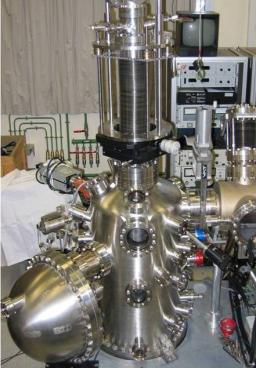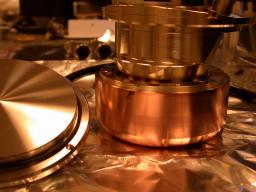
A phenomenon of transport is due to a force whose origin can be varied (electric or magnetic field, gradient of concentration, pressure etc...). Under the heading "transport measurements" are gathered various associated measurement techniques which can be flux measurements (heat, particles, electrical current, etc...), or statistical methods.
The nanotechnologies require to build complex heterostructures at an atomic scale. Those are generally carried out by deposition on a substrate (metal or oxide). The control of the physical phenomena of the growth and the realization of dots or thin films of well defined structure is one of the keys of the realization of new devices with new properties. The teams of the DRECAM largely use the various techniques of deposition, control of the growth and analyses and contribute to develop them.


The magnetic properties of bulk samples and thin films can be studied by Vibrating Sample Magnetometry (VSM) or Magneto-optic Kerr effect (MOKE).
Two VSM measuring devices are available in the IRAMIS:
- One device in SPEC
- One device in SPCSI
For research on low TC superconductors or more generally on electronic and magnetic matter properties at very low temperature, specific equipments are developped, like a dilution-fridge equipped SQUID magnetometer.
L'éclairement, par un rayonnement suffisamment énergétique, de la surface d'un matériau peut conduire à l'émission d'électrons dont la spectroscopie (étude en énergie) apporte des informations sur la composition de la surface étudiée.


x-rays, electromagnetic radiation beyond the remote ultraviolet ray, cover a range wavelength around the tenth of nanometer. This distance is about the distance between atoms in the condensed matter. The diffraction of x-rays thus makes it possible to probe the matter, and to obtain information on the structure, the order and the composition of materials.









